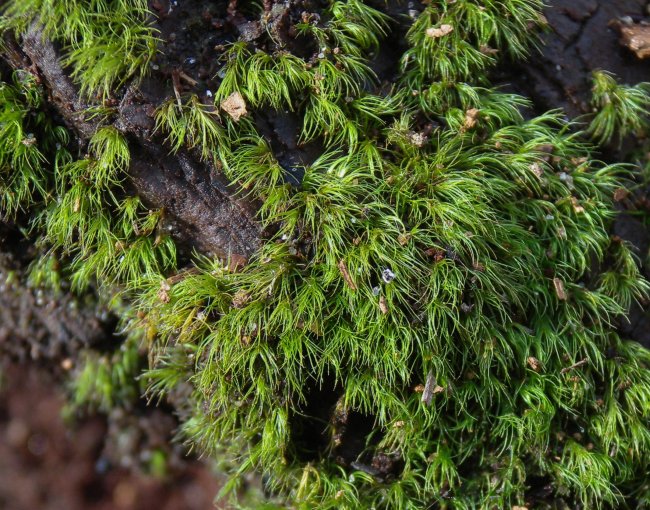
The leaves are yellowish green to medium green; their conspicuous midribs are a darker shade of green. The midribs extend from the leaf bases to their tips. There is no hyaline (colorless-translucent) border along the leaf margins. Not including their rather opaque midribs, the leaves have rectangular cells that change very little in size throughout. Occasionally, this moss produces stalked spore-bearing capsules during the autumn and perhaps other times of the year. The slender stalks (setae) are about 10-15 mm. long, light green to yellow, terete, and hairless. The bodies of the spore-bearing capsules are 1–1.5 mm. long, ovoid-cylindrical in shape, slightly asymmetric (curved more on one side than the other), hairless, and light green (while immature) to orange, red, or reddish brown (more mature). The bases of the capsule bodies are more tapered than rounded. The hairless lid (operculum) of the capsule has a long slender beak; it is similar in color to the capsule body overall, although tending to be more red. There is also a long-beaked hood that covers the lid and upper body of the capsule; it is membranous, hairless, and early-deciduous.
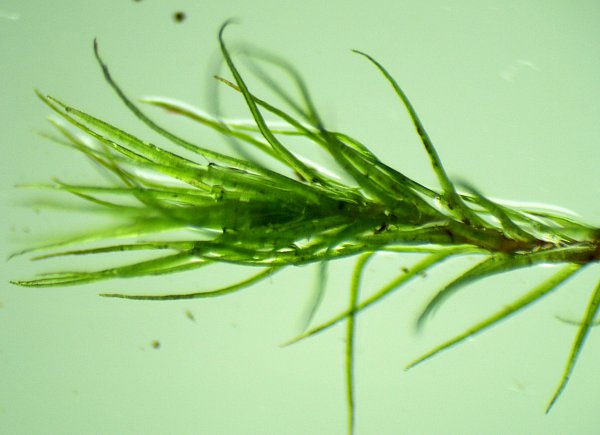
After the hood and lid fall off the body of the capsule, a ring of incurved teeth are revealed. These teeth are narrowly triangular and sharply divided in the middle to about one-half of their length. Thus, each tooth appears to be 2 teeth that are joined together below. The tiny spores are released to the wind; they are 14-18 micrometers across, globoid in shape, and slightly roughened on the exterior surface. Afterwards, the capsule bodies turn brown and become shriveled and ribbed, particularly below their toothed mouths. Because one side of the capsule body tends to shrivel more than the other, the capsule bodies tend to nod to one side near their toothed mouths. The base of this moss has fibrous rhizoids that anchor it to the substrate. The protonema (a fibrous mat of tissue, representing an earlier stage of development for a moss after spore germination) reportedly can produce gemmae (clonal buds) that can develop into new leafy plants. This moss often produces colonies of plants.
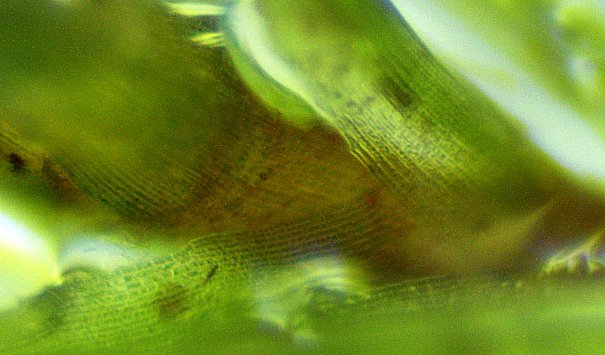
Cultivation: The preference is light shade, moist to dry-mesic conditions with moderately high humidity, protection from prevailing winds, and loamy soil containing organic matter. This moss also adapts to rocky ground and rocky walls that are either old and eroded, or have thin layers of soil. It can also adapt to decorticated logs that are soft, somewhat crumbly, and well-rotted. Tolerance to air pollution (particularly sulfur dioxide) and soil contaminated with heavy metals (particularly cadmium, copper, & zinc) is better than most mosses.
Range & Habitat: The native Fine Hair Moss (Dicranella heteromalla) is occasional in most areas of Illinois, except the SW section of the state, where it has not been collected (see Distribution Map). This moss is widely distributed in North America, Europe, Africa, and parts of Asia. In Illinois, habitats include north-facing slopes of woods, ground soil along woodland paths, upturned ground soil of fallen trees, well-rotted barkless logs in woods, earthen banks and sandy banks in shaded areas, shaded areas along roadsides, sandy-peaty ground along ditches, pockets of soil on large shaded boulders, north-facing sandstone walls along streams, shaded sandstone cliffs, shaded slopes of man-made excavations, mine-spoil piles, clay and gravel piles, and ground soil of unpaved roads in wooded areas. This moss is found in both disturbed habitats and higher quality natural areas.
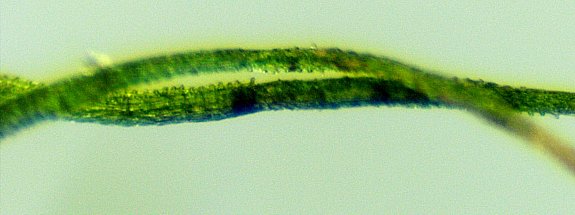
Faunal Associations: Although this species is not found in the United States, the larvae of a European crane fly, Tipula confusa, prefers Dicranella heteromalla as a food plant (Todd, 1993). A pill beetle (Byrrhidae) that has naturalized in North America, Simplocaria semistriata, also feeds on this moss (Johnson, 1990). Most pill beetle species in North America are obligate moss-feeders as both adults and larvae.
Photographic Location: A well-rotted decorticated log in Busey Woods, Urbana, Illinois. Close-up photographs were taken indoors using a microscope.
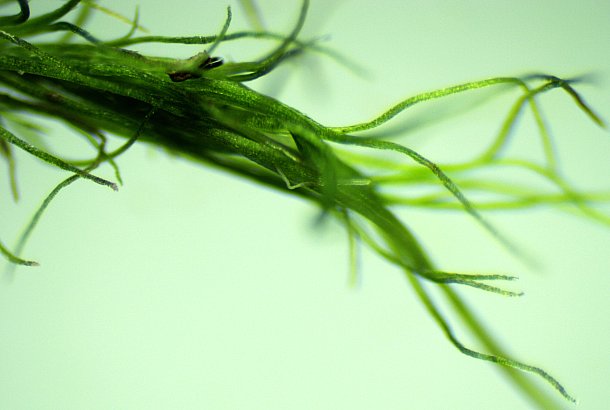
Comments: Fine Hair Moss (Dicranella heteromalla) has delicate attractive foliage. It differs from similar mosses (Dicranella varia, Dicranum spp., Ditrichum pallidum) by the small size of its leaves (only 2-3 mm. long), the tendency of its leaves to curve in the same direction, the presence of minute teeth along the outer margins of its dry leaves (requires microscopic examination), the absence of larger cells at its leaf bases (requires microscopic examination), the absence of hair-like rhizoids on its lower stems, the short length of its capsule bodies (1–1.5 mm.), the cylindrical-ovoid shape of its capsule bodies with tapered bases, and the tendency of its mature capsule bodies to shrivel and nod asymmetrically below their toothed mouths. Another common name of this moss is Silky Forklet Moss.